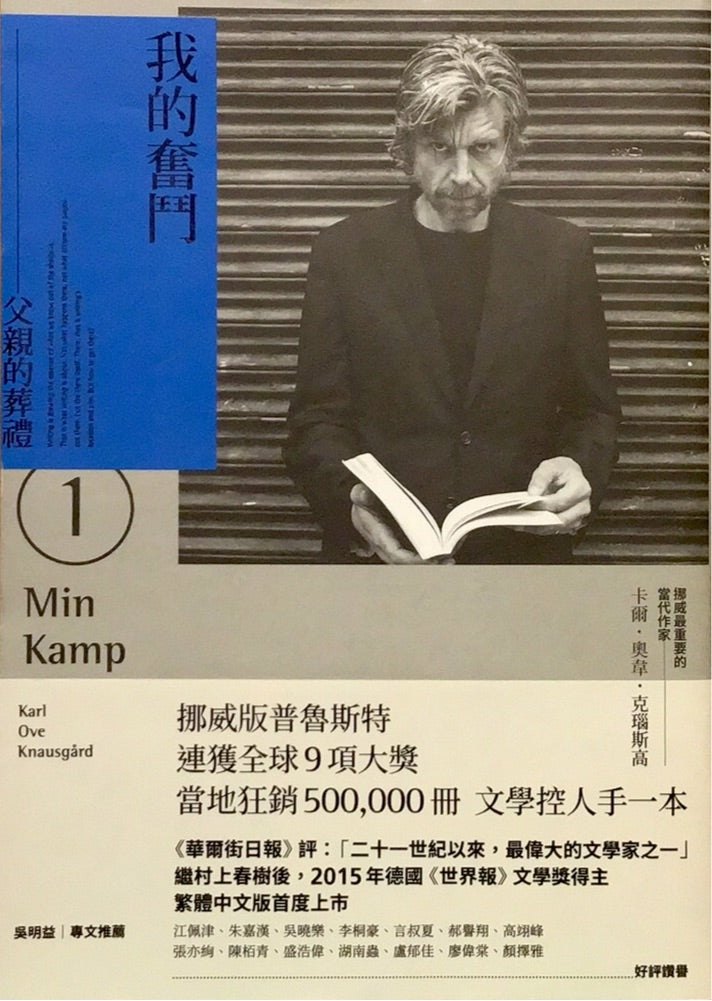My Kampf - Father's Funeral
My Kampf - Father's Funeral
Couldn't load pickup availability
"Gradually, I fell in love with the narrative of "Mein Kampf" (especially the first one). I fell in love with its unbridled, long-winded,
Hesitant and calm, the sentimentality and sharpness of Nordic colors are distinct. ” (Wu Mingyi/Recommended article)
"New York Times" book critic Dwight. Garner was obsessed with books "like he had malaria," forgetting to walk his dog, not answering emails, and having no time to do the dishes. The king of Nordic crime novels, You. Nesbo was also enamored, saying the wait for each volume was worth it. Well-known European and American writers Chatty Smith, Jeffrey. Eugenides, Jonathan. Lesser, book critic James. Wood and others expressed their addiction to reading this book.
"What is dad to me?
Someone I longed to die for.
So what are all these tears for? "
♦Reveal all the inside stories and secrets about yourself, your relatives, friends, and lovers for the sake of writing
"This is a work of literary suicide."
Because the content of the writing was too real, it was repeatedly opposed by relatives after publication. However, reviewers believed that such explicitness satisfied people's deepest desire for voyeurism. The first volume of "Mein Kampf" quickly aroused heated discussion as soon as it was published. In addition to selling well in Norway, it also quickly sold copyrights in various countries.
There are six volumes of semi-autobiographical novels with the themes of death, love, childhood, work, dreams and thinking. Each volume offers profound reflections from life and evokes strong resonance among readers with simple daily experiences. The author's writing style, which does not shy away from revealing the facts, is also what creates such a wonderful narrative. After the success of Knausgaard's writing strategy, more and more writers in Northern Europe followed suit, causing a wave of Knausgaard's aesthetic trend.
♦"Father's Funeral" is the beginning of everything
The writer's deep consciousness, ordinary daily life, is terrifyingly private.
"I myself saw a dead body for the first time when I was nearly thirty years old. It was a July afternoon in the summer of 1998, in a small church in Kristiansand. My father was dead.
He was lying on a table in the center of the room. The sky was cloudy, the room was filled with gray light, and a lawnmower was slowly making circles on the lawn outside the window. I stayed there with my brother. The undertaker went out first so that we could be alone with the deceased for a while. We stood a few meters away from the body and stared at it.
What I saw was no longer a person, but objects that looked like people. At the same time, he comes from among us, he was once one of us, and now he is still in my heart, like a veil of life covering death. "
At the beginning of the series, Knausgaard started everything with the death of his father. His father was serious, taciturn, and took his work very seriously, but he was a derelict father. His father's death once again reminded him of a period of childhood he had spent with him, how he had grown up under such majesty, and how he had found an opening to learn to rebel. After his parents divorced, his relationship with his father became even more estranged. When he learned of his father's death, he remembered that the last time he had a conversation with him alone was a year and a half ago. Although his father in his later years tried to maintain an upright and decent appearance in front of him, he was actually in dire straits. In the end, his upright image failed to impress Knausgaard, and the room where his father died was filled with a lot of things. Garbage, empty wine bottles, dirt... It was the extreme of great loneliness.


